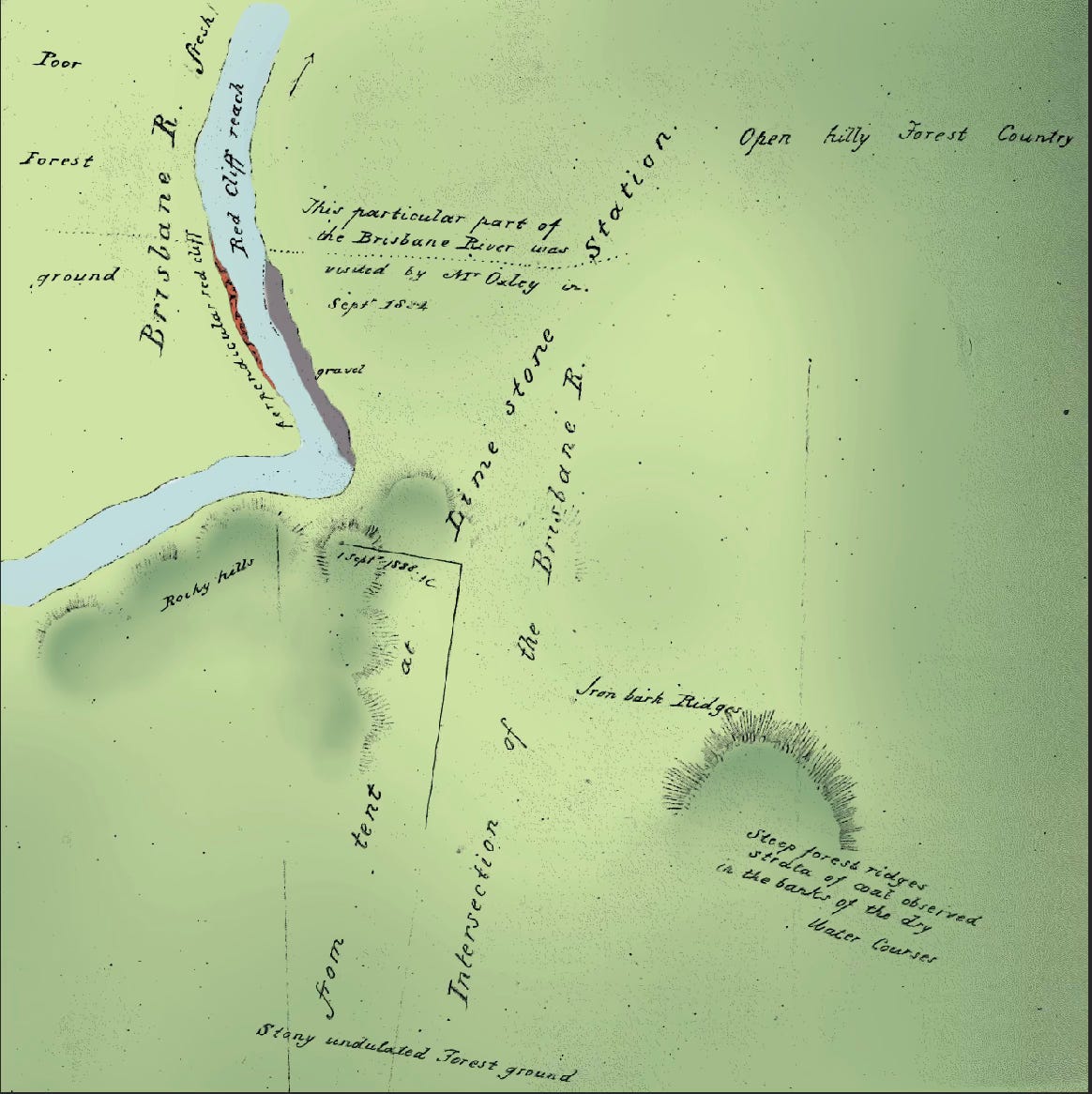On the Brisbane River about midway between Mount Crosby and the Kholo Bridge is a place of cliffs and high ridges that goes under the name of "the Blackwall". This is something toponymists have no trouble explaining, for the Blackwall is everything its name suggests.
The lovely view from the top of the Blackwall and the timelessness of the locality, preserved in the shape of its bucolic beginnings by being part of the land resumed for water supply, are certainly enough to write about, but as with many local things, there is more to know about the Blackwall.
The journals of Allan Cunningham, botanist and explorer, show that the Blackwall marks the most westerly point reached by his 1824 expedition with Surveyor General John Oxley, and it was after a walk into the nearby forests that Cunningham first described the great tree that bears his name, our king of trees, the Hoop Pine (Araucaria cunninghamii). Some noble specimens, he wrote, were majestic giants five feet in diameter and well over 100 ft tall.
At this point our explorers did something to surprise the logical toponymist; they named the place Red Cliff Reach (though today there is nothing conspicuously red about it) and Cunningham later marked a sketch showing the cliffs and their new name in his journal. This means that for a short while in the 1820s, the most easterly part of Moreton Bay colony and the most westerly point both went under the name of Red Cliff. Ours eventually being lost to time and the other eventually becoming Redcliffe.

It might be that a recent flood had torn away at the bank opposite the high cliffs of Blackwall and exposed some of the red metamorphic earth we call the Neranleigh-Fernvale Beds, but it is surprising the explorers were so careful to mark the red cliffs on their drawings, and give it a name, when right beside them stood the impressive buttress we now call Blackwall.
In 1828, following an investigation of his “entrance” to the Darling Downs (Cunningham's Gap), Cunningham rested at Limestone Station, now Ipswich, and made several short journeys into the neighbouring lands. Among these short trips was a melancholy walk north to Red Cliff Reach (Blackwall), which is four miles tramping exactly north of the Ipswich town centre. Allan’s walk rekindled the memory of his old and recently departed friend, John Oxley, and his great trees, about which he wrote:
"In traversing a pitch of forest ground formerly walked over by Mr. Oxley, accompanied by Lieutenant Butler and myself, to the Pine Range, I could feign to have recalled to life that lamented gentleman who so long and so creditably to himself filled this post, and many a pleasing incident now recurred to me. I passed over the ground and ascended the darkly brushed acclivity of the Pine Range by the same opening in the thicket which we had 4 years since penetrated to the higher points where grew those stately timber trees, the monarchs of these forests - the new Araucaria."m

Within less than 100 years, all of the largest pines were removed and turned into housing in Ipswich and Brisbane (also Mt Crosby). Only now, two centuries later, are we fortunate enough to see some of the monarchs reaching maturity again.



